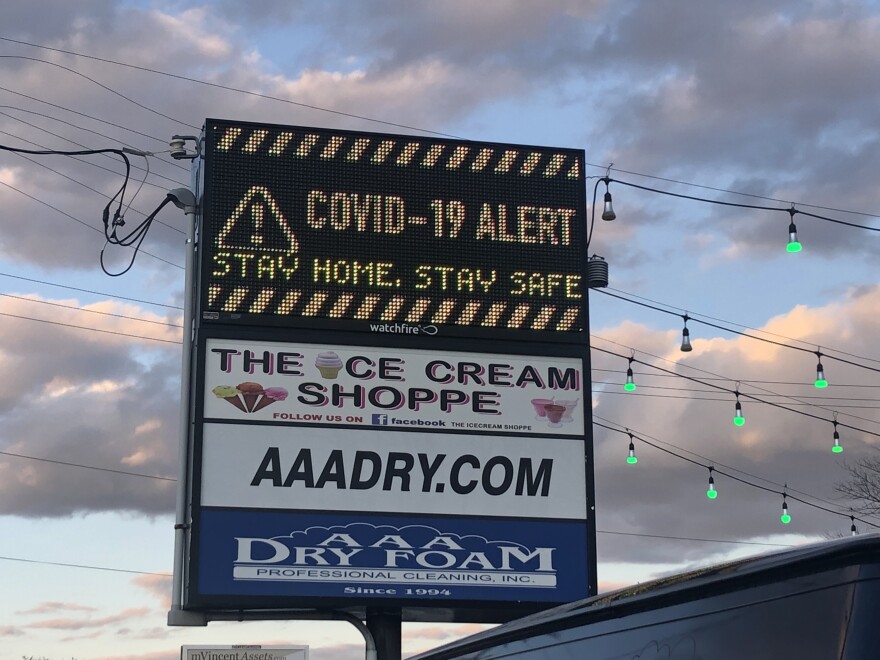Delaware is back on several northeast states’ travel advisory lists. And Gov. John Carney is not happy.
Delaware is among the 31 states from which visitors must quarantine for two weeks if they visit New York, New Jersey or Connecticut. Delaware was put on— and then taken off — these states’ quarantine lists earlier this month.
Gov. John Carney expressed frustration about this at his press briefing Tuesday.
“I’m mad as hell, frankly,” he said. “It doesn’t make any sense.”
The lists are based on two criteria — the percent of COVID-19 tests that come back positive in a state and the number of new daily cases per 100,000 residents.
If either measure averages above 10 over the course of a week, a state goes on the list.
Delaware’s 7-day average for new daily cases topped the threshold at about 10.2 per 100,000 residents Tuesday. But its average percent testing positive was 4.3 — below the World Health Organization’s target of 5 percent.
Carney argues the states should be looking at the issue more holistically.
“We’re going to be on and off [the list], unless we stop testing,” he said. “And we’re not going to stop testing.”
Delaware is 13th in the country for total tests done per capita, according to Johns Hopkins University.
Speaker of the state House of Representatives Pete Schwartzkopf (D-Rehoboth) says the first time Delaware was added to the quarantine lists, businesses suffered.
“We had one hotel that lost over $200,000 that weekend because of cancellations out of New Jersey,” he said during a virtual conference hosted by the Delaware State Chamber of Commerce Tuesday. “We had restaurants that were closing down at 8 o'clock at night because people weren't here over July 4th weekend.”
Schwartzkopf says he heard from a hotel in Dewey Beach that customers from New Jersey were booking rooms again hours after Delaware was removed from the lists. He sees Delaware’s inclusion on the lists as unjustified.
“We're in the yellow zone but we are so close to the green that we can touch it, that's how good we are compared to other states,” said Schwartzkopf. “It just breaks my heart. … Now we've got those knuckleheads over in New Jersey that say that you can't go to Delaware, or if you do, you've got to quarantine when you get back. I guess we're headed for another bad weekend because we can't get off the list until next Tuesday."
The state still has not announced the scenario under which schools will open this fall — but Carney hinted at where the state might be headed during his weekly briefing Tuesday.
The state Department of Education released guidance to districts last week based on three scenarios: fully in-person school, fully remote learning or a combination of the two. The state plans to make the call next month.
Carney said Tuesday the state’s current outbreak metrics put it in the intermediate, or “yellow,” scenario. He expects the state to stay there.
“My own view is we’re likely to be in that yellow category as we move into the end of August, early September, based on where we are today, where we’ve been and our trajectory going forward, our increased testing,” he said.
Carney also said the priority should be on getting younger students into the classrooms, due to the importance of children being able to read on grade level by 3rd grade. He also noted schools provide supports in addition to academic education, including meals, mental health services, socialization and child care.
Carney suggested the possibility of a hybrid solution, with elementary school students in-person and middle and high school students remote.
The president of the statewide teachers’ union last week expressed support for a virtual start to the school year, saying schools don’t have enough time to implement the guidance and open school campuses safely.
Dr. Karyl Rattay, head of the state’s Division of Public Health, announced Tuesday a round of funding to low-wealth communities, administered by community organizations, to respond to the coronavirus. She noted the disproportionate impact the virus has had on low-income communities, communities of color and non-English speakers.
Nine communities, including several neighborhoods in Wilmington, the Route 9 Corridor in New Castle, Dover and Ellendale will share over $700,000 under the Health Communities Delaware program.
This story has been updated.






